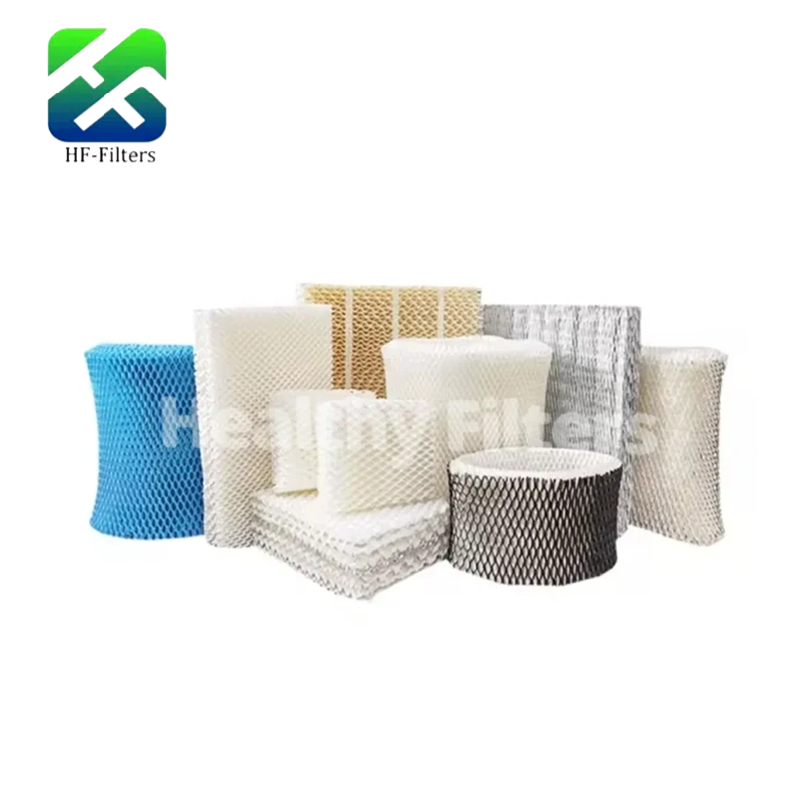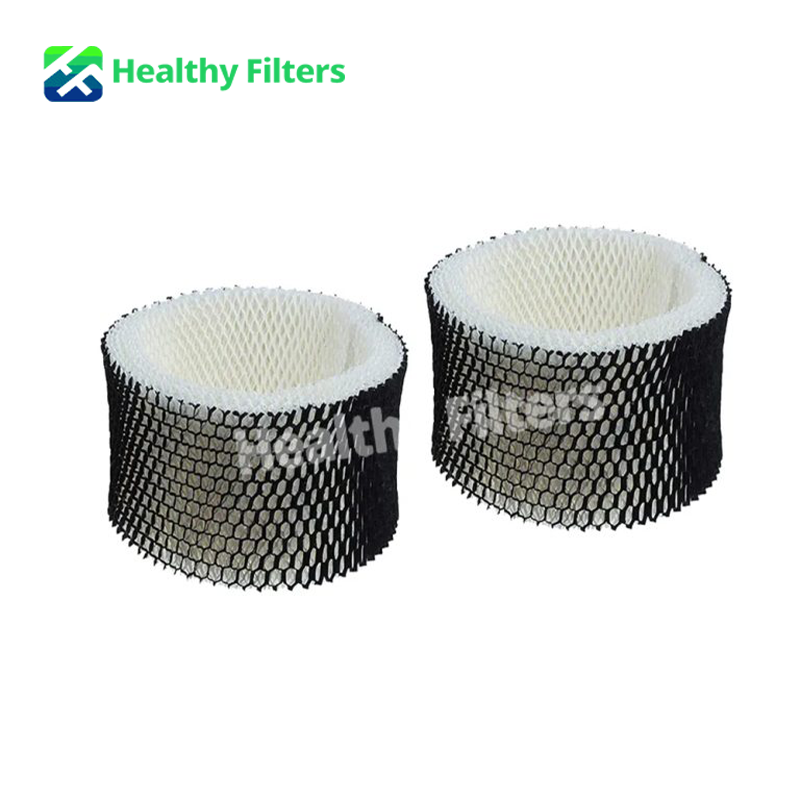When the weather stays dry for weeks, you probably notice it first on your lips or skin. The air feels sharp, your throat gets sore, and even wooden furniture starts to crack a little. That’s when people turn to humidifiers. Without a proper filter, the mist from a humidifier can carry dust or minerals instead of clean moisture. Using the right filter makes a real difference. It helps the air stay soft, comfortable, and safer for daily breathing. If you’re looking for a trusted name in air filtration, Healthy Filters deserves attention. This company started in Shenzhen back in 2016. Their production line uses advanced testing equipment and materials that pass CE, ROHS, and SGS standards. What makes them stand out is how practical their designs are. They know how to balance cost, durability, and everyday usability.

Why Does a Humidifier Need a Filter in Dry Air Regions?
If you live in a place where the air feels like it’s stealing moisture from your skin, a humidifier can bring relief. But running it without a filter might do more harm than good. In dry areas, dust floats easily, and tap water often leaves white residue once it dries. A good filter keeps that stuff from becoming part of your room’s air.
Air Quality Maintenance
A humidifier filter acts like a soft shield. It holds back particles, pet hair, and tiny dirt that your eyes can’t see. Filters made from strong synthetic fibers, like the PET layers used by Healthy Filters, trap these impurities while still letting the air move freely. This stops the buildup of scale inside your machine and keeps the mist cleaner and lighter.
Humidifier Efficiency and Lifespan
When the air is very dry, you probably use the humidifier for hours. If the filter has smooth airflow and even texture, it reduces stress on the fan motor. Materials like non-woven polyester or wood-pulp paper soak up water evenly, so you won’t get uneven mist or sudden bursts. The device lasts longer, and you spend less time fixing or replacing parts.
Healthier Indoor Environment
Clean moisture means less dust floating around your nose and less risk of bacteria or mold forming inside the tank. For families with kids or people who are sensitive to dust, it brings noticeable comfort. Regular filter changes keep the air stable and fresh throughout the season.
What Type of Filter Material Performs Best in Dry Climates?
Not every filter handles dry weather the same way. The choice of material decides how well it holds water, resists clogging, and stays firm over time.
Wood Pulp Paper Filter Media
Wood-pulp paper filters are known for quick water absorption. They pull in water fast and let it out smoothly, helping your humidifier stay balanced. Healthy Filters uses similar treated cellulose layers that stay strong after long soaking. These layers resist tearing and give high dust-holding capacity with low resistance, which suits dry indoor air perfectly.
Synthetic Fiber and Composite Materials
Synthetic filters like polyester or melt-blown fabric are more flexible. They resist wear even when soaked and dried many times. That matters for people who keep their humidifiers running day and night. These filters are also easier to handle and less likely to break apart when cleaned.
Antimicrobial and Odor-Control Additives
Some advanced filters have antibacterial treatment or pre-filter media. These layers reduce bad smells and limit microbe growth, which is useful if your room is closed for long hours. They keep the mist clean even when you refill the tank several times a week.
How Does the Home Appliance Humidifier Filter Improve Performance?
In daily use, a reliable filter saves effort and keeps things simple. The Home Appliance Humidifier Filter Replacement Wick Filter is one of those filters that quietly do their job without fuss. It is thick, tightly made, and easy to fit.

High Absorption and Evaporation Rate
The tiny holes between fibers spread water evenly. This gives a steady level of humidity instead of sudden jumps. You can run the humidifier overnight without worrying about dry air when you wake up.
Precise Fit and Compatibility with Major Brands
This filter is shaped to match many home models, so there’s no air leak or rattle during operation. The snug fit makes the humidifier run smoothly and quietly, which is something you start to appreciate on silent nights.
Extended Lifespan under Continuous Use
Tests similar to those used in Healthy Filters’ lab show this kind of filter keeps more than 85% efficiency after long operation. With normal care, it lasts weeks longer than basic paper filters. That saves both time and money in the long run.
Why Choose the Top Quality Replacement Wick Humidifier Filters for Household Use?
If you use a Holmes humidifier, the Top Quality Replacement Wick Humidifier Filters is worth a look. It’s built to balance air movement and moisture level even in very dry rooms.

Enhanced Airflow and Moisture Output
Its multi-layer design gives a large surface area, helping water turn into mist faster. You’ll feel the difference within minutes of switching it on.
Easy Replacement and Maintenance
The sturdy frame holds shape even after soaking, so replacing it is simple. The materials come from high-strength fabrics similar to those used in Healthy Filters’ pre-filter lines — washable, steady, and safe.
Reliable Filtration for Allergy-Sensitive Users
It’s suitable for spaces where people spend long hours resting or working. The cleaner mist helps reduce dust settling on surfaces or getting into sensitive noses.
What Makes Wood Pulp Paper Filters Ideal for Dry Environments?
People who run their humidifiers for long hours often prefer the Factory Direct Sale High Quality Wood Pulp Paper Filter for Humidifier Wick Filter. This type uses thick cellulose fibers similar to those found in industrial-grade paper filters.

Eco-Friendly and Biodegradable Composition
Because it’s made from natural wood pulp, it’s both safe and recyclable. If you care about sustainability, this is a cleaner choice for your home and the planet.
Superior Water Retention Ability
Wood pulp expands slightly when wet, which helps it hold water longer without dripping. Even if your machine pauses for a while, it stays damp enough to restart quickly.
Cost-Effective Performance for Long-Term Use
You don’t need to replace it too often since the paper structure lasts longer. Consistent absorption avoids dry spots or blockages, helping you keep your running cost low.
How to Maintain and Replace Humidifier Filters Effectively?
Maintenance sounds boring, but it’s what keeps the filter alive. Neglect makes even the best model fail sooner.
Cleaning Frequency and Best Practices
If your water is hard, rinse the filter gently every few days. Use cool water and avoid soap or hot water since heat can warp the fibers. Just a quick rinse helps remove mineral dust.
Signs That Indicate Replacement Time
When the filter looks brown, stiff, or smells odd, it’s ready to go. Keeping an old filter too long can cause bacteria growth or weak airflow.
Storage Tips to Extend Filter Life
If you don’t use your humidifier for a season, dry the filter completely before storing it. A damp filter in a closed box can grow mold fast. Keeping it dry adds months to its life.
FAQ
Q1: How often should you replace a humidifier filter in dry regions?
A: Usually every two to three months, depending on how often you use it and your water quality. Heavy daily use means faster change.
Q2: Can you clean and reuse a humidifier filter?
A: You can rinse some types gently, but avoid brushing or using soap. Replacing it is safer for keeping the mist clean.
Q3: Why does airflow drop after several weeks?
A: Dust or minerals clog the filter’s tiny holes, blocking the passage of air. A quick rinse or swap brings the flow back.

